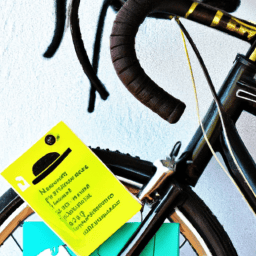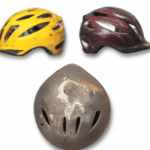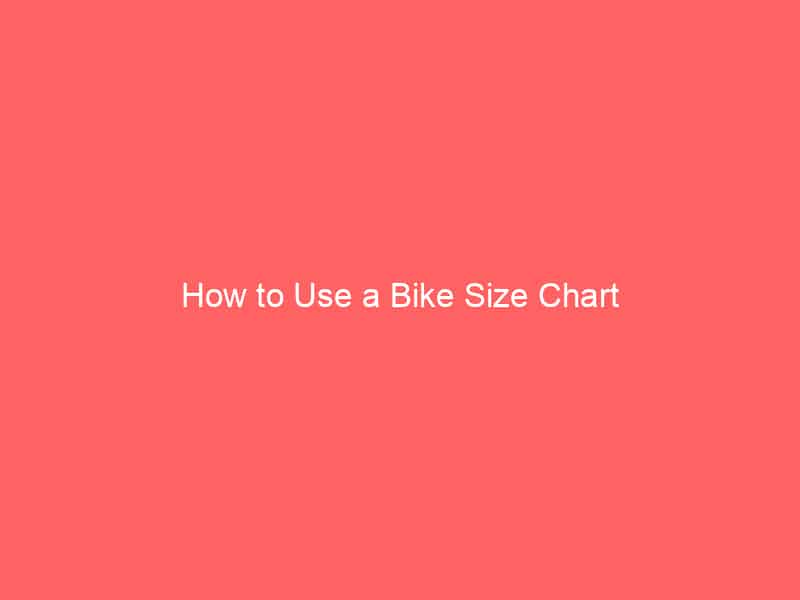As an experienced cyclist and advocate for safety, I cannot emphasize enough the critical need for wearing a bike helmet. Throughout my cycling years, I have personally witnessed the severe outcomes that can arise from failing to sufficiently protect your head. This is the reason I aim to impart my insights and expertise regarding who needs to wear a bicycle helmet.
First and foremost, it’s essential to understand that wearing a helmet is not just a personal choice; it’s also a legal requirement in many places. Whether you’re a seasoned cyclist or a beginner, it’s crucial to know the age requirements for wearing a helmet and the situations in which you must wear one.
By following these guidelines, you can ensure you’re not only protecting yourself but also abiding by the law. So, let’s dive in and explore who is required to wear a bicycle helmet.
Key Takeaways
- Helmet requirements for cyclists are dictated by state and city laws, with common age ranges for requirements being under 12-16 years old.
- Medical and religious exemptions exist for helmet usage, and exceptions may apply to private roads that are open to the public.
- Proper helmet usage, including fit, maintenance, and replacement, is essential for protection. Other protective gear, such as knee and elbow pads, is also recommended.
- Wearing a helmet is a crucial aspect of cycling, and can prevent serious head injuries. It is always important to prioritize safety while cycling and follow helmet safety tips to protect against injury.
Overview of the Importance of Bicycle Helmet Safety
You might think riding without a helmet is cool, but wearing one can save your life and prevent serious head injuries. In fact, helmet effectiveness in preventing head injury has been widely documented.
Studies have shown that wearing a helmet can reduce the risk of head injury by up to 85 percent. Not only does wearing a helmet protect your head, but it can also give you peace of mind when riding. Knowing that you’re taking steps to prevent a potentially life-threatening injury can help you feel more confident and secure on your bike.
So, if you’re a cyclist, it’s crucial to always wear a helmet when riding. Now, let’s explore the age requirements for wearing a bicycle helmet.
Age Requirements for Wearing a Bicycle Helmet
As someone who’s been an avid cyclist for years, I know firsthand the importance of wearing a bicycle helmet.
When it comes to age requirements, there are state and city laws in place that dictate who must wear a helmet.
Additionally, there are common age ranges where wearing a helmet is highly recommended for safety reasons.
State and City Laws
Cycling through the concrete jungle requires more than just skill, it also requires abiding by state and city laws that mandate the use of a bicycle helmet. These laws vary greatly depending on where you are in the country.
Some states have implemented mandatory helmet laws for all ages, while others have only implemented them for certain age ranges. Similarly, some cities have their own helmet laws that may differ from the state’s laws.
Enforcement of these helmet laws can be a concern, as it can be difficult to monitor and regulate. However, it’s important to remember that wearing a helmet can significantly reduce the risk of head injuries in the event of a crash.
So, regardless of the laws in your area, it’s always a good idea to wear a helmet while riding your bike. With that being said, let’s dive into the common age ranges that these helmet laws apply to.
Common Age Ranges
When it comes to state and city laws regarding helmets, age is a major factor. Childhood safety is a top priority, and many states have laws that require children under a certain age to wear a helmet while riding a bicycle. This age typically ranges from 12 to 16 years old depending on the state. However, it’s important to remember that adult responsibility also plays a crucial role in helmet usage.
Helmet fit is key for protecting the head and brain in the event of a fall or collision. It’s important to ensure that the helmet is the correct size and fits snugly on the head. A loose helmet can slide off during impact and fail to provide proper protection. When purchasing a helmet, it’s recommended to try on multiple sizes and models to find the best fit.
Remember, proper helmet usage is not just a legal requirement, but it’s also an important step in ensuring the safety of yourself and others while riding a bicycle.
Moving on to the next section about helmet requirements for riding on public roadways, it’s important to note that these laws vary by state and city.
Helmet Requirements for Riding on Public Roadways
As a cyclist who frequently rides on public roadways, it’s important to understand the definition of what constitutes a public roadway in relation to helmet requirements.
Generally, a public roadway is any street, road, or highway that is maintained by a government entity and open to the public.
However, there may be exceptions to the rule, such as designated bike paths or private roads that are open to the public.
Understanding the Definition of a Public Roadway
You can’t assume that just because you’re not on a main road, you don’t have to wear a helmet. In fact, the definition of a public roadway can be broader than you might think.
A public roadway can include not just highways and busy streets, but also bike paths, sidewalks, and even private roads that are open to the public.
It’s important to understand this clarification because it means that regardless of where you ride, you may be required to wear a helmet if you are on a public roadway. Of course, there are exceptions to the rule, such as when riding on a closed course or in a designated area where helmets are not required.
However, it’s always wise to err on the side of caution and protect your head with a helmet whenever you’re on a bike.
Exceptions to the Rule
Sometimes, even the most experienced cyclists can get into accidents that could have been prevented with the right safety gear. However, not everyone is required to wear a bicycle helmet while riding on public roadways. There are exceptions to the rule, including medical and religious exemptions.
Medical exemptions are granted to individuals who have a physical condition that prevents them from wearing a helmet. This may include individuals with a traumatic brain injury, severe scalp lacerations, or certain medical conditions that make it difficult or dangerous to wear a helmet. Religious exemptions are granted to individuals who belong to a religion that prohibits the use of helmets. While these exemptions exist, it is important to remember that wearing a helmet can greatly reduce the risk of serious injury or death in the event of an accident.
As important as it is to understand the exceptions to the helmet wearing rule, it is equally important to prioritize safety while cycling. Even if you are exempt from wearing a helmet, it is still recommended to wear other protective gear, such as knee and elbow pads. In the next section, we will discuss some tips for helmet safety that can help keep you safe while cycling.
Helmet Safety Tips
Wearing a helmet while cycling can greatly reduce the risk of head injuries, and it’s important to remember to properly adjust and fasten it before hitting the road!
A properly fitting helmet should sit level on your head and cover your forehead, while the straps should be snug but not too tight. It’s also important to check your helmet regularly for any signs of wear and tear, and to replace it if it’s been involved in a crash or if it’s more than a few years old.
In addition to proper fitting and maintenance, there are some other helmet safety tips to keep in mind. First, make sure to always wear your helmet when cycling, even if you’re just going for a short ride. Second, consider investing in a helmet with MIPS (Multi-directional Impact Protection System) technology, which can provide additional protection against rotational forces in the event of a crash.
Finally, be sure to replace your helmet if it’s been involved in a crash, as it may be damaged even if it doesn’t appear so on the outside.
By following these tips and taking helmet safety seriously, you can help protect yourself from serious head injuries while enjoying the many benefits of cycling.
Frequently Asked Questions
Can I wear a skateboard helmet when riding a bicycle instead of a bicycle helmet?
I used to think my skateboard helmet was good enough for biking, but did you know that bicycle helmets are designed to protect against higher impact speeds? It’s important to choose helmets that meet safety standards for each activity.
Are there any exceptions to the bicycle helmet requirement for adults?
As an experienced cyclist, I know that there are some helmet exemptions for adults with medical conditions. However, in general, it is required for adults to wear a bicycle helmet while riding to ensure their safety on the road.
What should I do if my helmet doesn’t fit properly?
Did you know that 80% of bicycle-related fatalities involve head injuries? If my helmet doesn’t fit properly, I adjust the straps and make sure it’s well-maintained. As an experienced cyclist, I know the importance of proper helmet fit and maintenance.
What are the consequences of not wearing a bicycle helmet in areas where it is required by law?
Not wearing a bicycle helmet in areas where it’s required by law can result in financial penalties and safety risks. As an experienced cyclist, I know the importance of wearing a helmet to protect my head from injury.
Are there any specific types of helmets that are recommended for different types of cycling activities?
As an experienced cyclist, I know that helmet materials and design trends have greatly improved over the years. It’s important to look for helmets with safety ratings and certifications, especially for high-risk activities like mountain biking or BMX racing.
Conclusion
In conclusion, I can’t stress enough the importance of wearing a bicycle helmet. As an avid cyclist for years, I know that it’s required by law in many states for younger riders and it’s also a crucial safety measure for riders of all ages.
Wearing a helmet can prevent serious head injuries and even save your life in the event of an accident. Riding without a helmet is like driving a car without a seatbelt – it’s just not worth the risk.
So, whether you’re riding on a public roadway or just cruising around your neighborhood, make sure to always wear a properly fitted helmet. And remember, safety should always be a top priority when it comes to cycling.
















